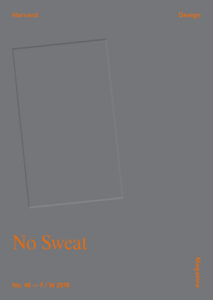Life, Autocompleted
Staring into the mundane depths of any modern technical system requires that one make peace with an analytic absurdity. Namely, that although one of our oldest fallacies concerning technical life is the imagined division between the mental and the material—as though thoughts and actions somehow belonged to separable realms of lived experience—we must nevertheless accept this division. We do so, if only temporarily, in order to understand the goals and motivations of the modern technical mind. This concession is necessary especially when contemplating the consciousness of system designers—all of the electrical engineers, computer scientists, and ergonomists whose singular focus is a “running program” between user and interface.
From within that mindset, so many technical activities appear as concerted attempts to automate thought. That is, if the long history of industrial automation can be understood as a generalized effort to mechanize manual labor (imagine, here, the great Taylorized factories of midcentury Fordism), today we are living through an equally concerted attempt to signalize mental labor.
But automation has never been a simple matter of passing labor from humans to machines; it has always involved the enmeshment of consciousness and gestural habits within processes that are neither organic nor machinic, but that instead reside within both realms at once, erasing, by design, any distinction between the two. As early as 1934, Lewis Mumford was able to write that “we have now reached a point in the development of technology itself where the organic has begun to dominate the machine,” where “[i]nstead of simplifying the organic, to make it intelligibly mechanical, as was necessary for the great ecotechnic and paleotechnic inventions, we have begun to complicate the mechanical, in order to make it more organic: therefore more effective.”
And so, in our present age of signalization—which dreams of converting all of lived experience into discrete, measurable, and calculable electrical charges (signals)—automation moves into
thinner realms, into the topological and the electrical, in processes that are concealed from perception due to their size and speed. Today, we call this dream “machine learning,” “artificial intelligence,” or the “digital revolution,” but at base the effort remains the same: the substitution of automated computational processes for lived mental states.
Against this background, consider the now-ubiquitous family of algorithmic operations that together go by the name “autocomplete” and that currently extend throughout our digital lives (autofill, autotype, autocorrect, autoreplace, etc.). This group, which originated with efforts to assist persons with disabilities in using computational interfaces, modestly promises to “speed up human-computer interactions,” often by leaning heavily on the psychological principles of “primacy” and “recency”—that is, on our tendency to most easily remember the first and last instances in any “nonroutine mental task,” including lists, directions, purchases, financial information, aesthetic and lifestyle choices, and, ultimately, words themselves.
Design, too, has its own forms of autocompletion. Can we say that the original “Copy” and “Array” commands, in the first commercial release of AutoCAD in 1982, constituted a fundamental and decisive rupture in architectural reasoning? One in which a whole series of incredibly laborious (that is to say, time intensive) orthographic gestures were subsumed within an algorithmic logic that aimed to automate architectural thinking? To contemplate this rupture is not to suggest that computation is somehow less thoughtful than the orthographic techniques it has replaced, but merely to acknowledge that thinking takes place under radically different conditions in each.
If the labor time of traditional (orthographic) media established a delay between lived life and its representation—producing both a historical record and a historical consciousness, through and against which the present was understood and experienced—then electronic media appear to have eliminated that temporal separation. This apparent erasure lies at the heart of the logic of “real time,” whose very name asserts its equivalence with the time of lived life. In strictly technical terms, however, the opposite has occurred: what outwardly appears to be an elimination is, in fact, a displacement and an intensification, wherein the delay between the present and its past is moved beneath the threshold of unaided perception and reestablished in an electronic elsewhere, so that the time of life may be composed anew. This technical recomposition has had dramatic implications, radically altering not only the internal working methods of the design fields (ways of thinking and making), but also the larger cultural conditions in which those practices hope to meaningfully intervene.
Historically, automation has carried with it a complementary politics of labor, which, when undertaken, invents concepts capable of addressing life’s newly automated realities. During the highest phases of mechanical industrialism, the concept of deskilling was invented to define conditions in which the skills of preindustrial handicraft had been supplanted by the logic of divided labor. If, as Bernard Stiegler insists, “[t]echnics does not aid memory; it is memory”—if the technical dimension of life is coextensive with memory itself—we might contemplate today the meaning of mental deskilling, both for its potential to affect new experiences and for its uncertain political consequences.
And what of forgetting, without which, Friedrich Nietzsche once wrote, “there could be no happiness, no serenity, no hope, no pride, no present”?
Deeply layered—thick but fused, like acrylic—computational automnemonics are impressing themselves into lived life, dissolving once and for all any imagined division between the mental and the material. Any new politics of mental labor will need first to realize that the central question is not whether we will still remember how to remember, or how to forget, but whether the technical-gestural systems we now live within will have any need for either.
John May is assistant professor of architecture and director of the Master in Design Studies Program at the Harvard University Graduate School of Design. With Zeina Koreitem, he is cofounder of MILLIØNS, a firm that conceives of architecture as a speculative medium for exploring the central categories of contemporary life. Their approach insists on an expansive parallel project of technical, historical, and cultural analysis, which surrounds and informs their work.
